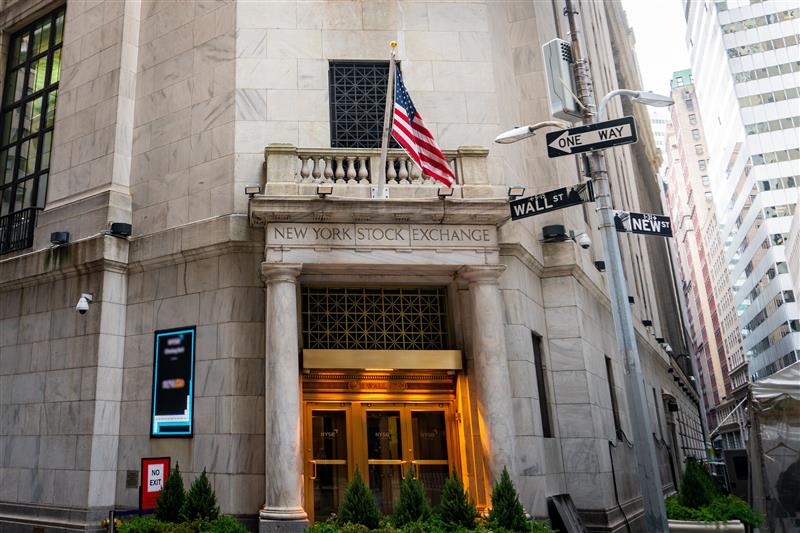At last year’s Private Growth Conference, expectations were high that the IPO market would reopen — and by year’s end, the data looked encouraging.
The Jefferies 2025 Private Growth Conference brought together hundreds of top bankers, investors, founders, and tech executives to discuss the sector’s key trends and developments. The insights below are drawn from interviews and panels with conference attendees.
Activity was still below historical norms, but U.S. proceeds were up more than 50% year-on-year, and IPOs raised nearly four times as much as they had in 2022. Some of the year’s biggest offerings came out of the tech sector, including ServiceTitan and Reddit. Both are now trading above their listing price.
This year, that optimism hasn’t gone away, but it’s tempered by recent volatility in public markets. Uncertainty around trade policy has many companies holding back, even as a strong pipeline of IPO-ready names sits in wait.
At the 2025 Private Growth Conference, Jefferies caught up with leading bankers, founders, and executives across tech to hear what they expect in the second half of the year.
Tariff Jitters Slowed Momentum, but the Rebound May Be Quick
“For three years, we’ve thought the IPO market was ready to open. This year, conditions are different,” said Becky Steinthal, Head of TMT Equity Capital Markets at Jefferies. “There’s never been a higher-quality cohort of private tech companies . . . but we need more market stability. It’s an unusual dynamic.”
One of those companies is Klarna, the buy-now pay-later provider whose highly anticipated IPO was delayed as tariff news rattled markets. Another is Cerebras Systems, an AI chip company that filed to go public in September, but hasn’t yet confirmed the timing or size of its forthcoming public offering.
Fortunately, many investors believe the current holding pattern will last days or weeks, not months. “The lag between markets recovering from tariff volatility and the IPO market coming back is going to be really narrow,” Steinthal shared. “This is the most excited I’ve seen investors about the IPO market in years. They’re going to need fewer data points before jumping into IPOs.”
Gaurav Kittur, Co-Head of Global Internet Investment Banking, echoed this sense of pent-up demand. Public investors and private companies want access to each other, he explained. They just need the conviction to move.
“Next-generation tech leaders have stayed private, so public investors haven’t had real access to those exciting companies,” Kittur said. He believes once a few strong deals go out, momentum will follow: “It’ll probably be a trickle, then a flood.”
In the days since the Jefferies conference, the trickle has begun, marked by a series of successful offerings.
Israeli stock brokerage eToro debuted on NASDAQ with Jefferies as a lead underwriter, raising nearly $310 million as shares closed up nearly 30% on day one. And just this week, stablecoin issuer Circle jumped 168% in its NYSE debut after pricing above the expected range.
Honing Your Pitch While the Market Waits
As many top companies remain cautious, tech leaders are preparing to make the most of the window when it opens.
“We want to go public as the leading travel technology company — not in third or fourth place,” said Dakota Smith, President and Co-Founder of Hopper. The travel data provider and marketplace is eyeing a public listing that could value the business at up to $10 billion.
“That’s what we’re focused on now,” Smith added. “Sharpening the narrative, making sure the client book and revenue growth are strong, and starting to get that story out there.”
Becky Steinthal also underscored the importance of sharp messaging, something many tech leaders are using the current quiet period to refine.
“Companies need to tell a really strong story on unit economics,” she said. “It’s not just about showing profitability; they need to prove they can be a big, bad, self-sustaining business.”
Alternative Paths to Liquidity for Companies in Wait
With IPOs still sluggish, many companies are exploring alternative paths to liquidity. If the big exit isn’t on the table yet, how can they deliver some liquidity to investors and employees in the meantime?
“We see a ton of activity on both the private and the public side,” said Evan Osheroff, Managing Director for Software Investment Banking at Jefferies. “It’s the same old adage: things have been quiet the last couple of years. Companies need to go, private equity needs to go. Everyone wants distributions to paid-in capital (DPIs) and liquidity returned to their shareholders.”
“If you’re a private company eyeing the IPO market, [you’re pursuing] more secondary ways to kick the can down the road,” he added. “We’re doing a lot of these right now: secondary tenders for investors trying to sell, but don’t necessarily want the market to know it’s them selling.”
Osheroff also noted that partial liquidity events can be just as important to employees as to private equity or venture investors. “These alternatives serve early- and late-stage investors—and, I’d argue, most importantly, employees.”
When the Spigot Opens
Despite short-term volatility and the pause it’s created, many insiders remain confident that capital formation is close at hand, with IPOs poised to be part of the broader rebound.
“The world has been waiting for the spigot to open on capital formation broadly,” said Raphael Bejarano, Global Head of Investment Banking and Capital Markets at Jefferies. “That extends beyond IPOs.”
As for the uncertainty coming out of Washington, Bejarano believes clarity is near. “We’re going through a period of recalibration. There’s a new administration and, frankly, some dramatic changes. But it can’t last forever for a whole slew of reasons. When stability returns, the spigot is likely to open.”
For companies with strong fundamentals and a clear story, the message from investors is simple: be ready.




